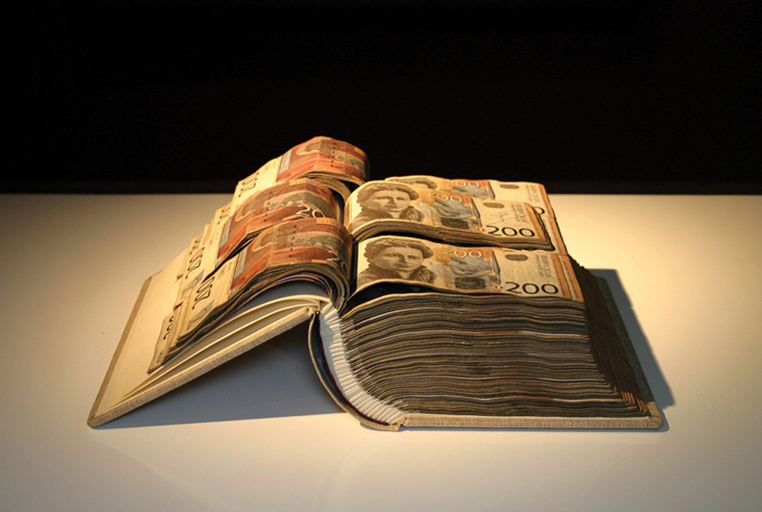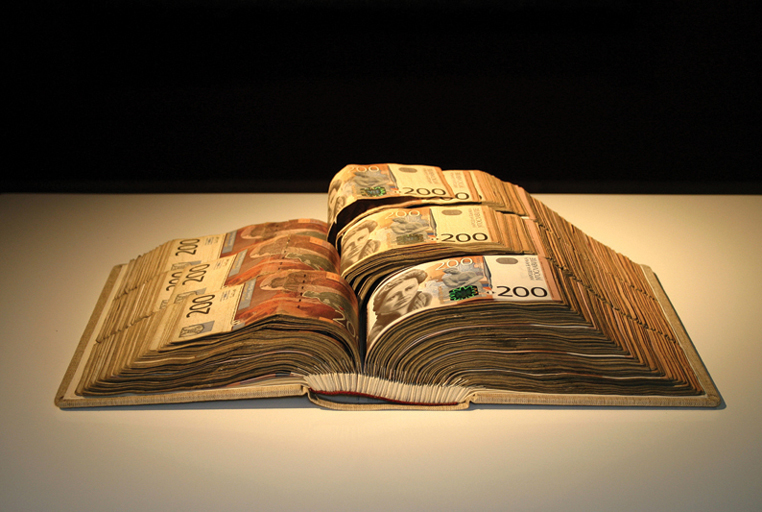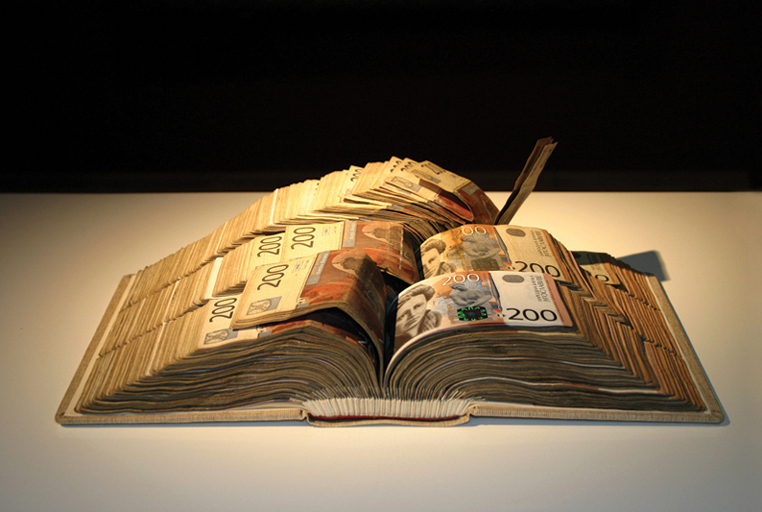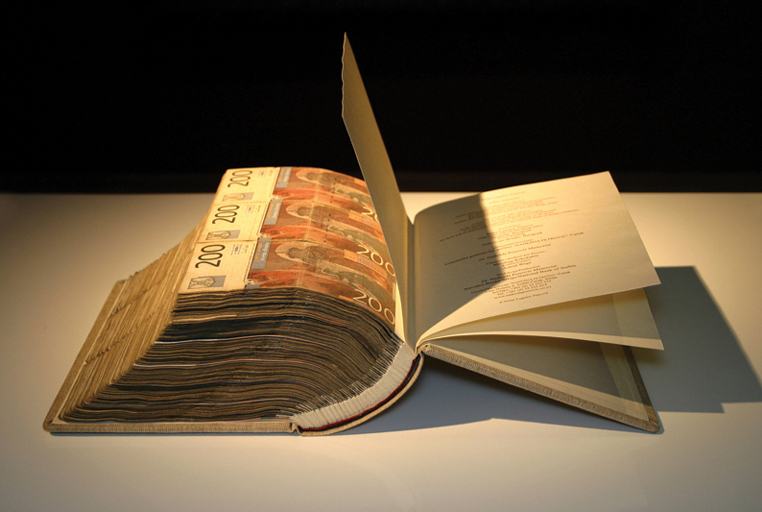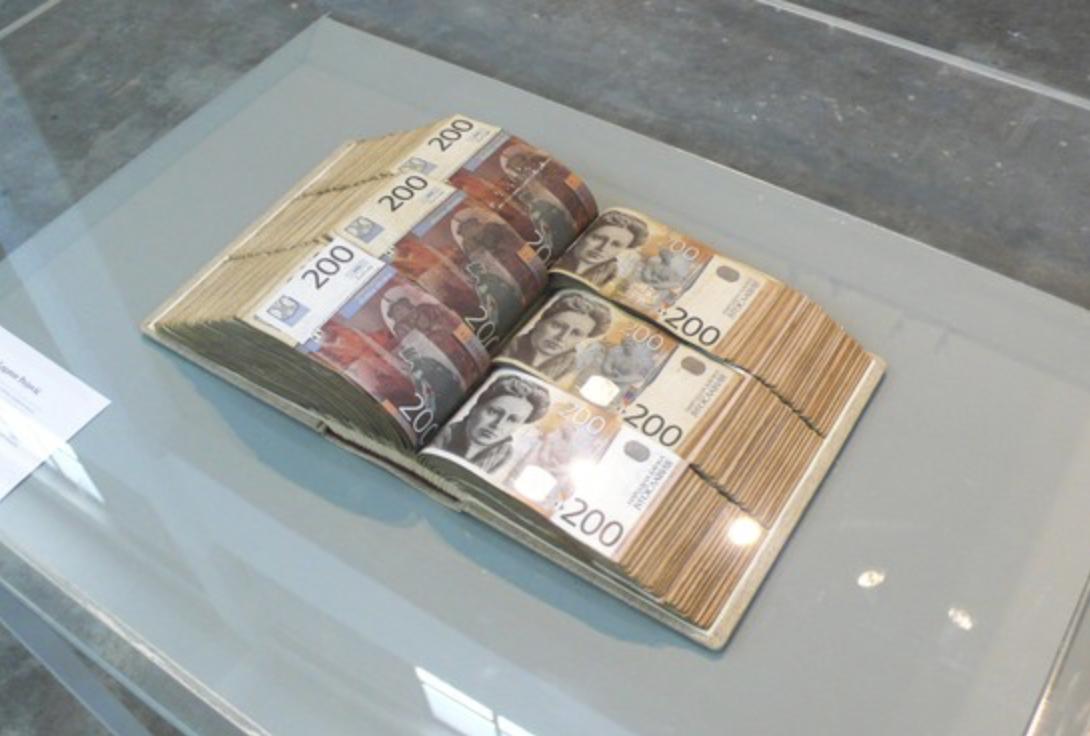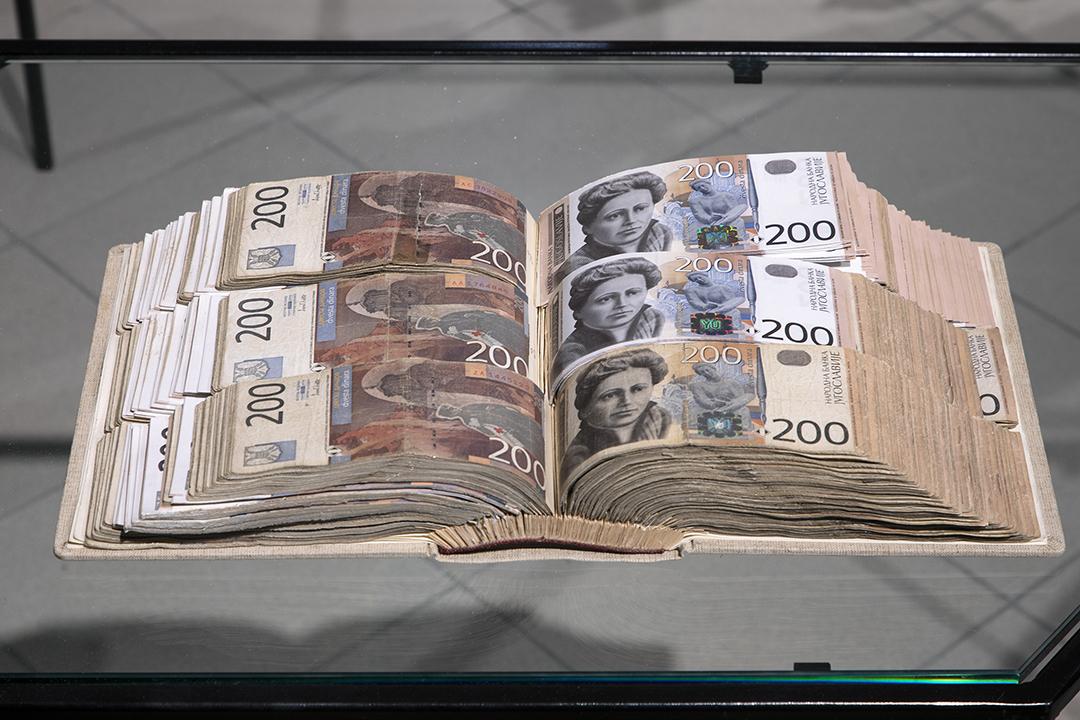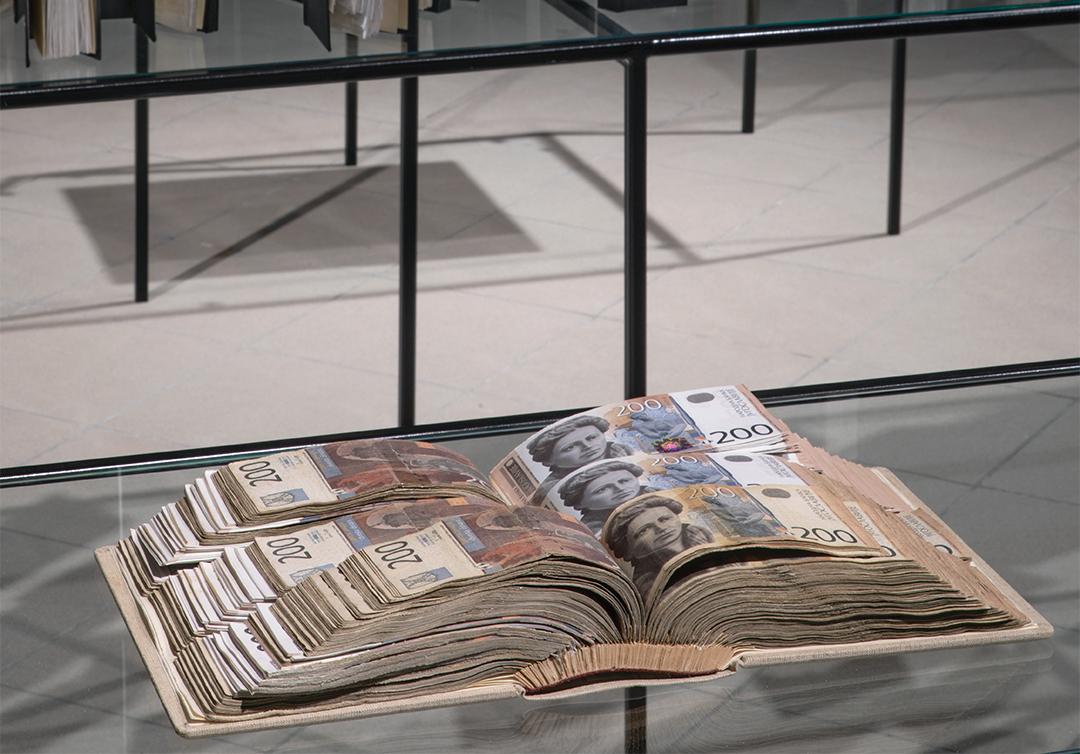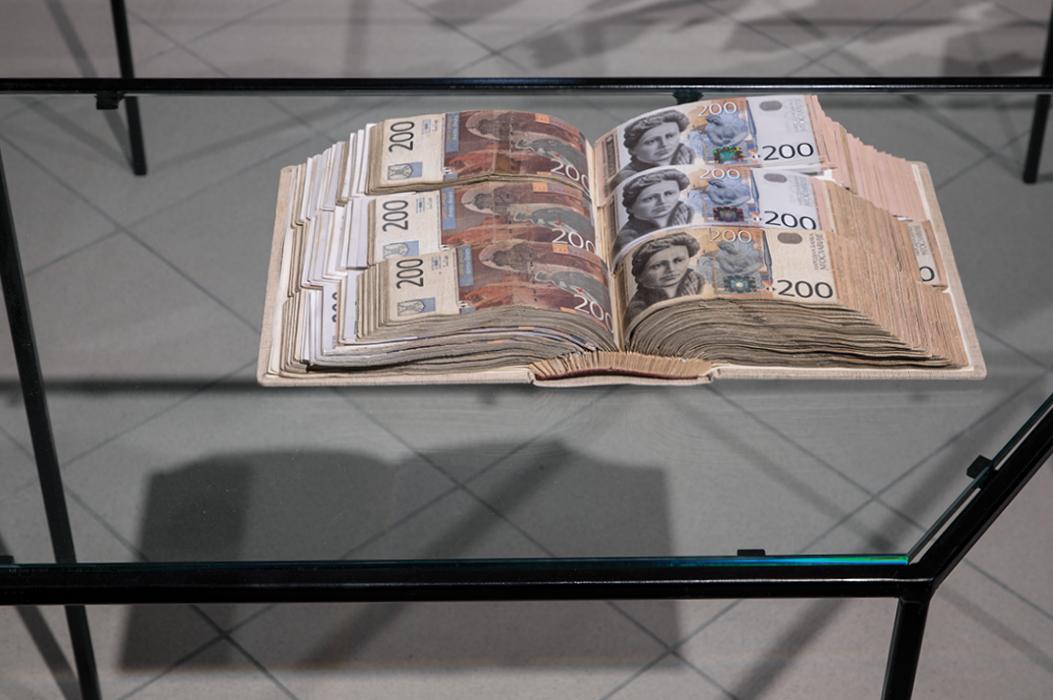Irena Lagator Pejović
works
- Lines, Values, Coexistences
- United Species
- Means that Can Contribute to the Phytoremediation of Polluted Areas
- Saved Books. The Art of Transmitting the Knowledge Without the Need for Subsequent Reparation.
- “I Would Put All Mighty Weaponry Into the Museums That No One Visits”
- Expanses of Love
- “If I Were Ronald Regan”
- Nets, Nodes, Horizons
- Workers University
- My Father’s Salary
- Fiscal Verses. Reprogramming the Machine
- Missing Content
- The Knowledge of the Limited Responsibility Society
- Shared Air
- Blurred Landscapes
- There is Already a Feeling of a Flow
- Symbiotic Collection
- Maximum Profit - Minumum Time
- This is Not a Landscape Any Longer. Tolerance, Transparency, Transition.
- Nature Culture
- Pillars and Horizons
- Where is the Monument?
- Forward Play Reverse
- Life and Institution
- Capital Culture Cuts
- Two Safes. No keys!
- Non LLC l.l.c.
- Plastic Water
- Society and Documents
- Exchange Value
- Work in Public Space
- Institution Nature
- LLC versus Non LLC
- Abbandoned Cinema
- Freedom Security Progress
- Occupying/Liberating Space and Time
- Directions
- Image Images
- Property
- Dissapearance Appearance
- Further than Beyond
- Image Think
- Ecce Mundi
- Camera Imaginata. The Means for Exchanging the Power of the Imagination
- Means for Intensifiying a Sense of Poetic Reconstruction of the World
- The Society of Peaceful Coexistence, Santa Croce sull’Arno
- Installation for Improving the Sense of Responsibility
- Equation Function
- Limited Responsibility Society, Santa Croce sull’Arno
- Resistence Reservoir
- Limited Responsibility Society, Polignano a Mare
- Limited Responsibility Society Automatism
- Experience Economy History
- The Society of Peaceful Coexistence, Belgrade
- Responsitorium Horizon Poems
- Time of Limited Responsibility Society
- Limited Responsibility Society Experiment, Salzburg
- Present Space Expansion
- Cultural Barriers to Growth
- Continuous Limited Responsibility Society
- Knowledge of the Limited Responsibility Society
- Limited Responsibility Society Experiment, Strobl
- Limited Responsibility Society By Night
- Limited Responsibility Society, Cetinje
- Inverse Spaces
- Our Colored Everyday
- Machine Error. Shape a Book
- What We Call Real
- After Memory
- Next
- Is It Still Winter, Outside?
- The Way We Live
- How Small is the Universe
- Living Space
- The Society of Unlimited Responsiblity
- Own Space
- Living Room
- Near Universe
- An Embrace in the Space
- Light in Space
- Please Wait Here
- Wash Inside Out
- What is Missing
- Temporary Dumping Place. Rotations in the Given Space
- Opening of the Book
- Registrar
- May I Help You
- Passerby
- Are You Happy Now
- BBBBeauty
- Tell Why
- Witness of Time - Now
- Witness of Time
- It is Made for You
After Memory
2007-2008
artist book, 1800 valid banknotes borrowed from National Bank of Serbia and bound in a book, a request to National bank that the amount will be brought back in the form of a work of art under the condition to be permanently exhibited in bank´s Museum of Money
21 x 17 x 9.5 cm
Text: Astrid Wege /// dr Mileta Prodanović
Exhibition/Venue:
- Transforming Memory. The Politics of Images, international biennial of contemporary art/24th Nadežda Petrović Memorial, Čačak, Serbia. Catalogue/Curated by Astrid Wege, 2007
- Untitled (History), 12th Istanbul International Biennial of Contemporary Art, Istanbul, Turkey. Curated by: Adriano Pedrosa and Jens Hoffmann, 2011
- Irena Lagator Pejović, Expanses of Love, Art Gallery „Nadežda Petrović”, Čačak, Serbia, curated by Patrycja Rylko and Julka Marinković, 2023
Photo: Irena Lagator Pejović, Ivan Petrović
Borrowed from the National Bank of Serbia, a book/object titled After Memory, underlines the significance of collective memory, intertextual borrowing, economic loans, and cultural loans to the existing socio-political institutions by redirecting the exhibition narrative to the concept of a double game, a cultural and economic twist. It also refers to the perplexity felt by post-Yugoslav countries as the transition from socialist into nationalist political systems introduced wild neoliberalism and global capitalism, which was mistakenly associated with the concept of true democracy and freedom of choice and expression. (Patrycja Ryłko)
After Memory can be comprehended as a book that is constantly challenged by a variety of semantic resonances including economical, museological, gender-specific as well as national history-related ones. By using 200-dinar notes as a core material for her book object, Irena Lagator focuses attention both to the status attributed to Nadežda Petrović as well as to her popular reception. Petrović was the first woman to be portrayed, not as an allegory, but as an individual on a former Yugoslavian banknote, which indicates her significance as a person of national importance…
What After Memory does, is to draw attention to the purpose behind collective ceremonies, rituals and monuments serving the construction of (national) identity; it enables reflection on those institutional structures responsible for that construction and on individual, sometimes oppositional, reactions to it. As Aleida Assmann has pointed out in her book on the culture of remembrance and the role history plays in politics published in 2006, it is not only the ontological status that is crucial to the creation of collective self-perception, “but the potential influence emanating from construed and acquired historical experiences. Alongside the question “what happened and how did it come about?”, and, as a consequence, “questions regarding aftermath, imaginative interpretations and acquisition of history”, we are increasingly asking “how did people experience certain events and how are they remembered?”…
Those bank notes that once served as an object and vehicle of collective and individual wishes, projections, fantasies and stories are now relicts of the past. Still bearing traces of their former owners, they have been devaluated and fallen prey to official destruction. Lagator’s book object saves those worthless bank notes from destruction; having been transformed into a work of art, they survive as a historical document and gain new significance and value, not only in art, but also within the economic system. After Memory, which will be passed on to the Serbian National Bank Museum of Money when the exhibition is over, reveals mechanisms of value loss and value enhancement whilst it acts as a time capsule in which different time levels merge into one another. As a kind of “non-place” – a heterotopical place – After Memory breaks with familiar time structures and therefore makes the process of historical change, remembrance, and inevitably oblivion, comprehensible. If, as Walter Benjamin writes, history is “the subject of a structure whose site is not homogenous, empty time, but time filled by the presence of the now “, then it is certainly omnipresent in Irena Lagator’s After Memory. That idea is conveyed by the smell and texture of the bank notes, by turning over the pages and finally, by practical experience, that, as Rosalind Krauss put it by quoting Maurice Merleau-Ponty, the subject of observation constitutes itself, as does history, in the act of perception, “temporarily, from one moment to the next. (Astrid Wege)
page, 116-117, translated by Ana Šćepanović. In Irena Lagator Pejović: The Society of Unlimiited Responsibility. Art as Social Strategy. 2001-2011. Edited by Christa Steinle, Karin Buol-Wischenau, Neue Galerie Graz am Universalmuseum Joanneum. Publiished by Verlag der Buchhandlung Walther König, Köln, 2012.


